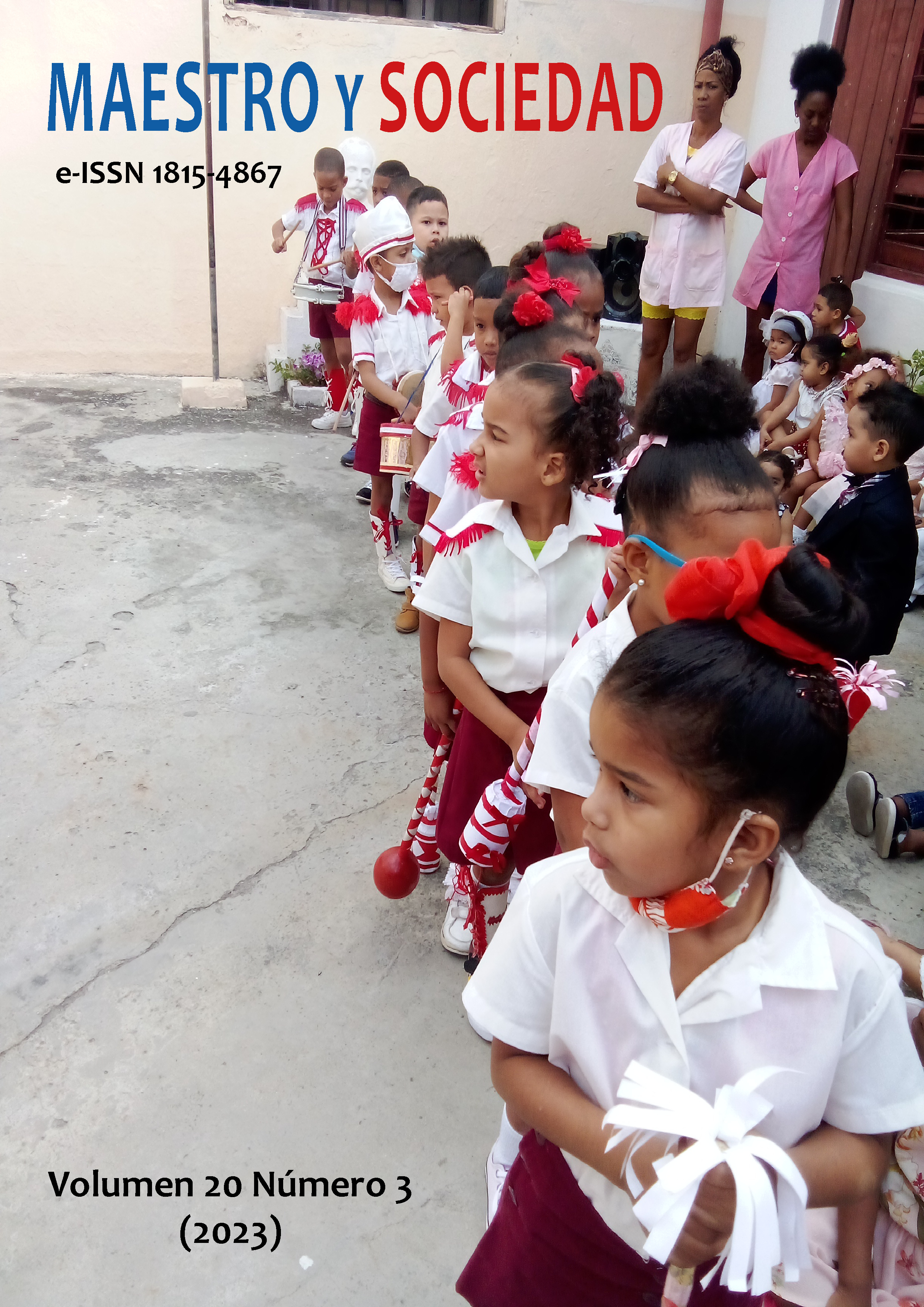Influence of COVID-19 on the transformation of Telecommunications: case study Cable Hogar
Influence of COVID-19 on the transformation of Telecommunications: case study Cable Hogar
Keywords:
Pandemic, internet, customersAbstract
Introduction: Given the increase in the COVID-19 pandemic, the insertion of the Internet in homes was one of the fundamental tools to be able to face the pandemic. The digitization of homes allowed the population to continue performing a number of daily tasks that previously required physical contact, is exposing the existing digital divide between countries and their interior. In this way, the present investigation aims to analyze the influence of covid-19 in the transformation of Telecommunications in Cable Home. Materials and methods: A structured observation was made, a comparison of the data obtained from new clients installed since 2019 before the start of the pandemic until the year 2022, where it was specified by canton, sector by quarter. A questionnaire was designed for a selected sample of 122 users, the survey was also designed using Google Forms, designing each of the questions using the Likert scale (Bad, Regular, Excellent). Results: The results obtained showed an increase in the year 2020 towards 2021 in the cantons of Bolívar, Junín and Portoviejo in the urban sector of more than 1,500 new clients. Discussion: The development of information and communication technologies and the large investments in the computer field have turned the Internet into a fundamental tool for negotiations. Conclusions: In relation to the application of the survey, it was determined in relation to speed, 52% stated that it is excellent, 7% determined that it is bad; This is how it is determined that there is a greater response from the rural sector inviting to determine the factors that influence an effective service speed.
References
Agudelo, M., Chomali, E., & Suniaga, J. (2020). Las oportunidades de la digitalización en América Latina frente al Covid-19. México: Corporación Andina de Fomento, 2020. Obtenido de https://repositorio.cepal.org/bitstream/handle/11362/45360/4/OportDigitalizaCovid-19_es.pdf
Burgos Martínez, R., Aguelles, V., & Palacios, R. (2021). Etapas del método estadístico. Ciencia Huasteca Boletín Científico de la Escuela Superior de Huejutla, 35-36.
Bustamante, J. C. (2015). Uso de variables mediadoras y moderadoras en la explicación de la lealtad del consumidor en ambientes de servicios. Estudios Gerenciales 3, 299–309. https://doi.org/10.1016/j.estger.2015.05.002
Betancur, G., D., M., Montoya, C., K. y Tavera, M., J., F. (2017). Estudio correlacional de
los factores que influyen en la recomendación y la lealtad de pacientes de medicina estética Medellín Colombia, 2014. Cuadernos de Administración Journal of Management. Universidad del Valle. Vol. 33 N° 58. May - August 2017. DOI: https://doi.org/10.25100/cdea.v33i58.4527
Charbonet, M. (2020). XXXII Reunión la Comisión de Educación, Cultura, Ciencia, Tecnología y Comunicación. Parlamento Latinoamericano y Caribeño, 12(34), 34-67.
Cordero, M. (2019). El comercio electrónico e-commerce, análisis actual desde la perspectiva del consumidor en la ciudad de Guayaquil, provincia del Guayas y estrategias efectivas para su desarrollo. Guayaquil: Universidad Católica de Santiago de Guayaquil. Customer Value, and Satisfaction: Evidence from China’s Telecommunication Industry. Information Systems Frontiers 6:4, 325–340, 2004. https://doi.org/10.1023/B:ISFI.0000046375.72726.67
Gloria, C. (2020). ncidencia enlas ventas de una empresa de Telecomunicacionesen la ciudad de Barranquilla. Revista BILO, 3-12.
Instituto Nacional de Estadìsticas y Censos, INEC. (10 de Marzo de 2016). Encuesta Nacional a Empresas. Obtenido de Encuesta Nacional a Empresas.: https://www.ecuadorencifras.gob.ec/inflacion-diciembre-2016/
Katz, R., Jung, J., & Callorda, F. (2020). El estado de la digitalización de América Latina frente a la pandemia del COVID-19. TELECOM ADVISORY SERVICES LLC, 45-67.
Konuk, F.A. (2018). The role of store image, perceived quality, trust and perceived value in predicting consumers’ purchase intentions towards organic private label food. Journal of Retailing and Consumer Services. Volume 43, July 2018, Pages 304-310. https://doi. org/10.1016/j.jretconser.2018.04.011
Laura Henao. (2020). Calidad de servicio y valor percibido como antecedentes de la satisfacción de los clientes de las empresas de Telecomunicaciones de Colombia. Contaduría y Administración, 1-23.
Mayaguez, U. (2020). Método estadístico. Colombia: 3 ed.
Ratings, F. (2021). “Coronavirus Crisis Is Crushing Global GDP Growth”. Chile: CEPAL.
Riccio, M., Astudillo, B., & Vega, M. (2019). Análisis de percepción de la calidad del servicio al cliente de una agencia de telecomunicaciones. Revista Compendium: Cuadernos de Economía y Administración, 12-17.
Rivera, C., Iglesias, E., & García, A. (2020). Estado actual de las telecomunicaciones y la banda ancha en Ecuador. Banco Interamericano de Desarrollo. Telecomunicaciones, 45-78.
Tsafaraski, S., Kokotas, T. & Pantouvakis, A. (2018). A multiple criteria approach for airline passenger satisfaction measurement and service quality improvement. Journal of air transport management (68), 2018, 61-75. https://doi.org/10.1016/j.jairtraman.2017.09.010
Vergara, J. C., Quesada, V. M. y Blanco, I. (2011). Análisis de la calidad en el servicio y satisfacción de los usuarios en dos hoteles cinco estrellas de la ciudad de Cartagena (Colombia) mediante un modelo de ecuaciones estructurales. Ingeniare Revista chilena de ingeniería, 19(3), 420-428. http://dx.doi.org/10.4067/S0718-33052011000300011
Wang, Y., Lo, H. P. & Yang, Y. (2004). An Integrated Framework for Service Quality.
Downloads
Published
How to Cite
Issue
Section
License
Copyright (c) 2023 Luis Antonio Giraldo Rosado

This work is licensed under a Creative Commons Attribution-NonCommercial-NoDerivatives 4.0 International License.
This journal provides immediate open access to its content, based on the principle that offering the public free access to research helps a greater global exchange of knowledge. Each author is responsible for the content of each of their articles.



























 Universidad de Oriente
Universidad de Oriente 